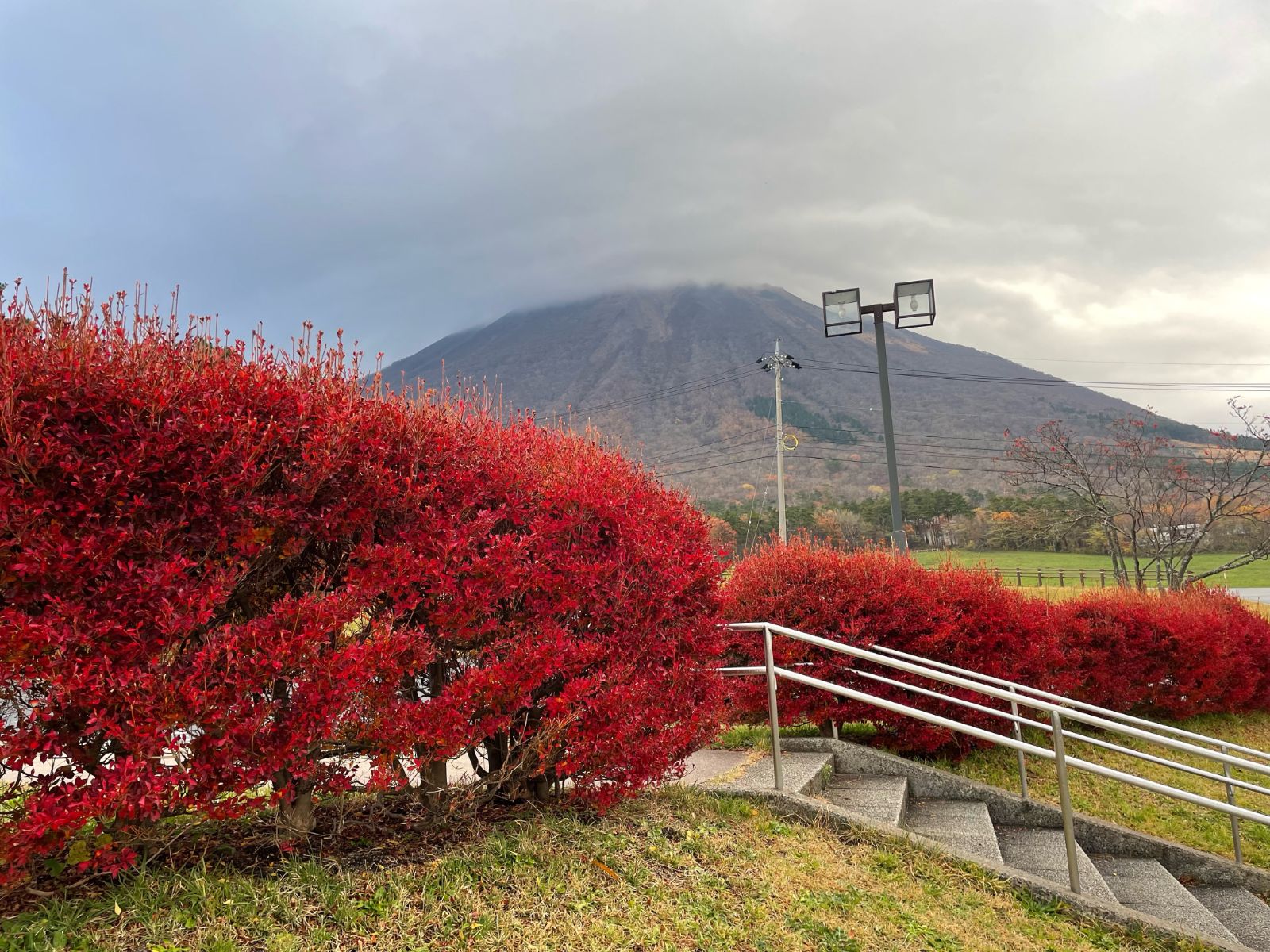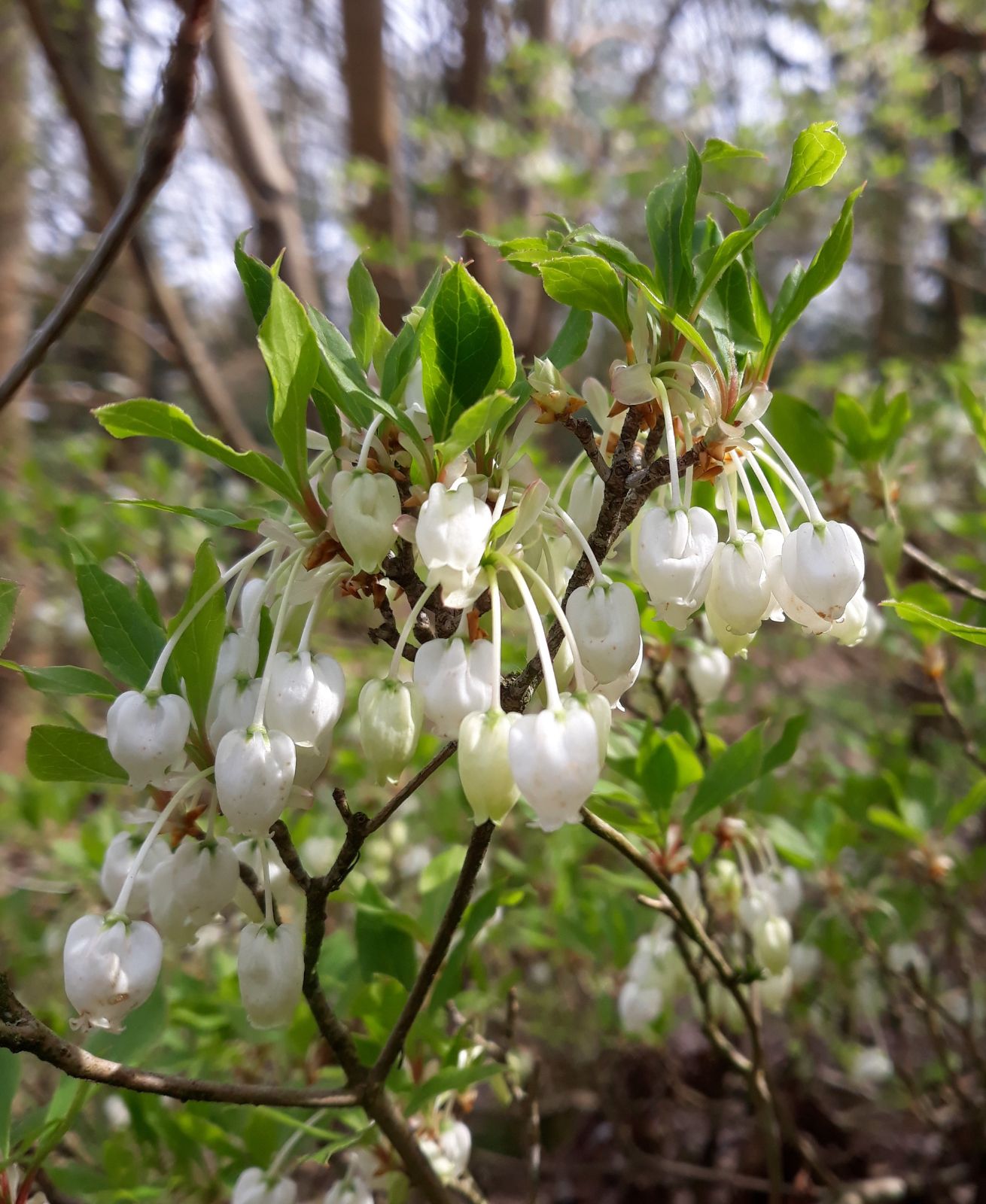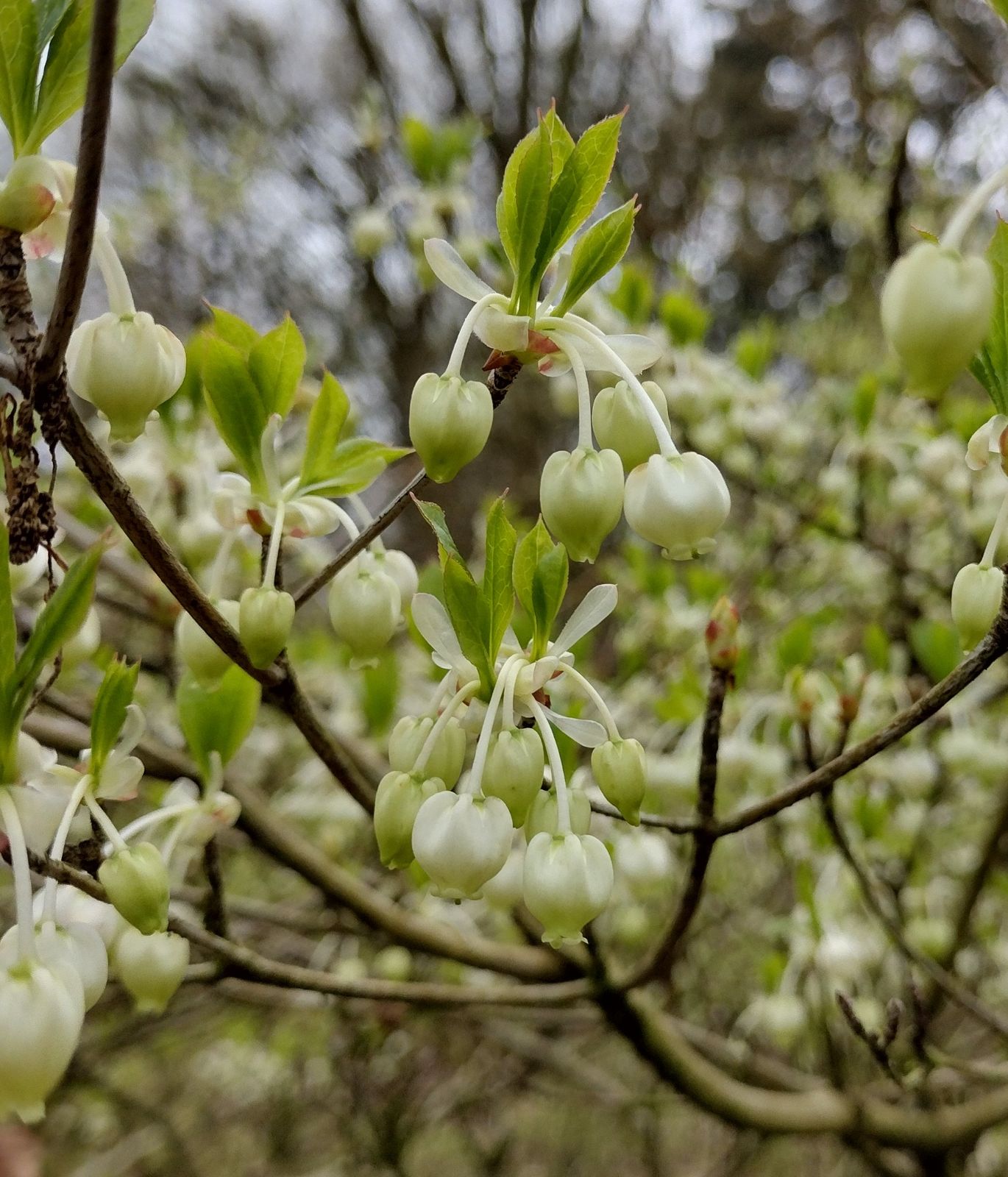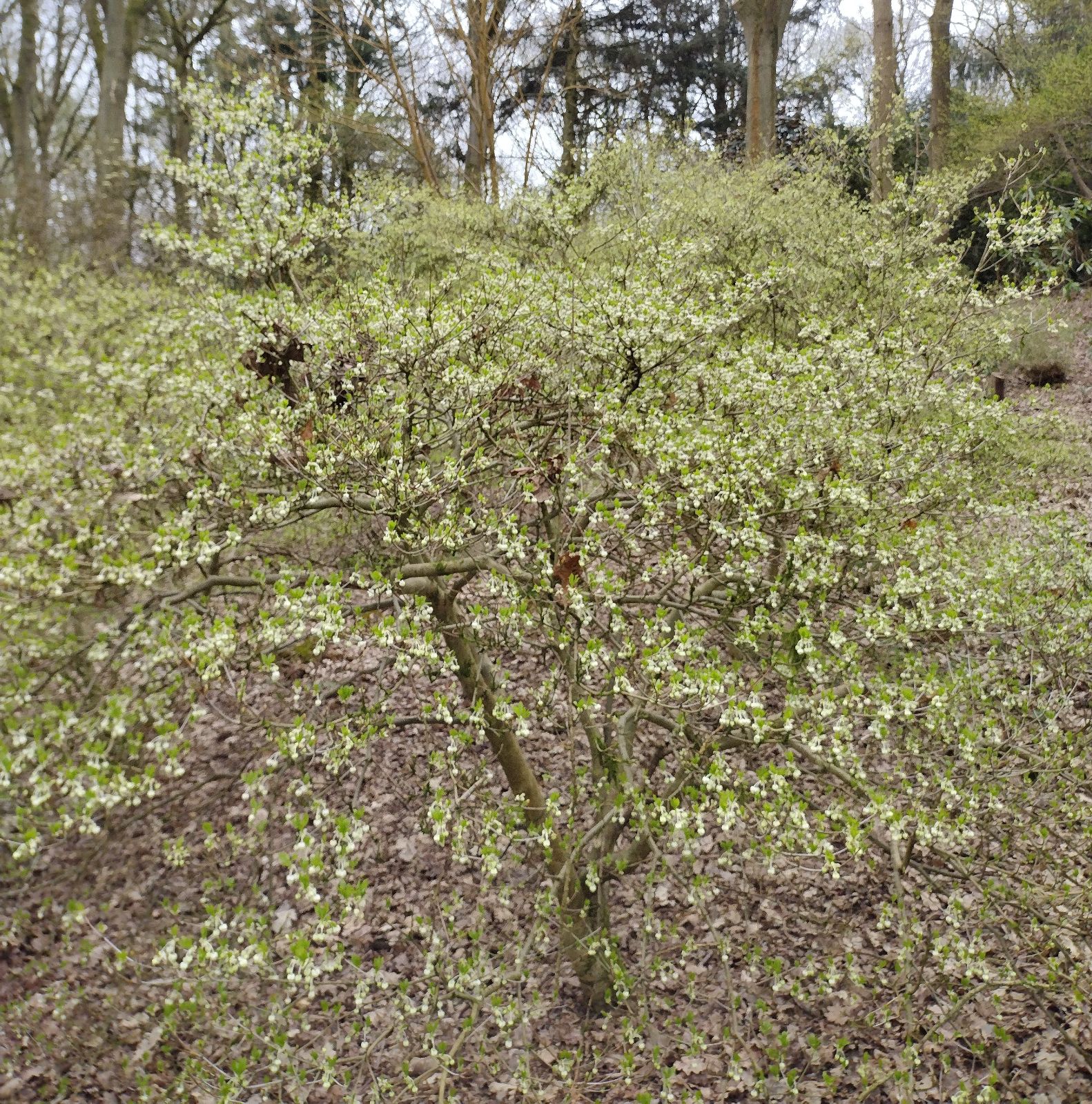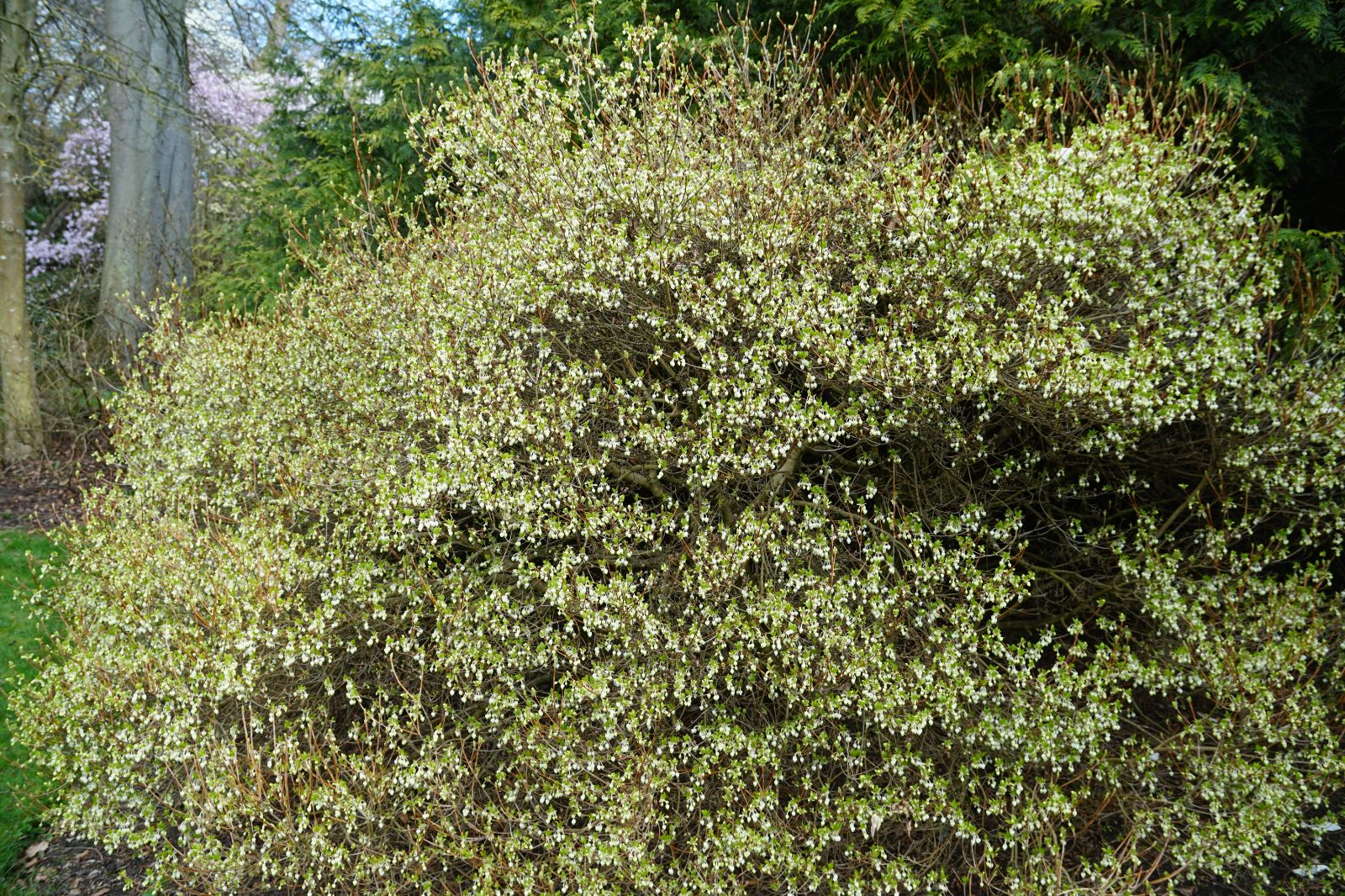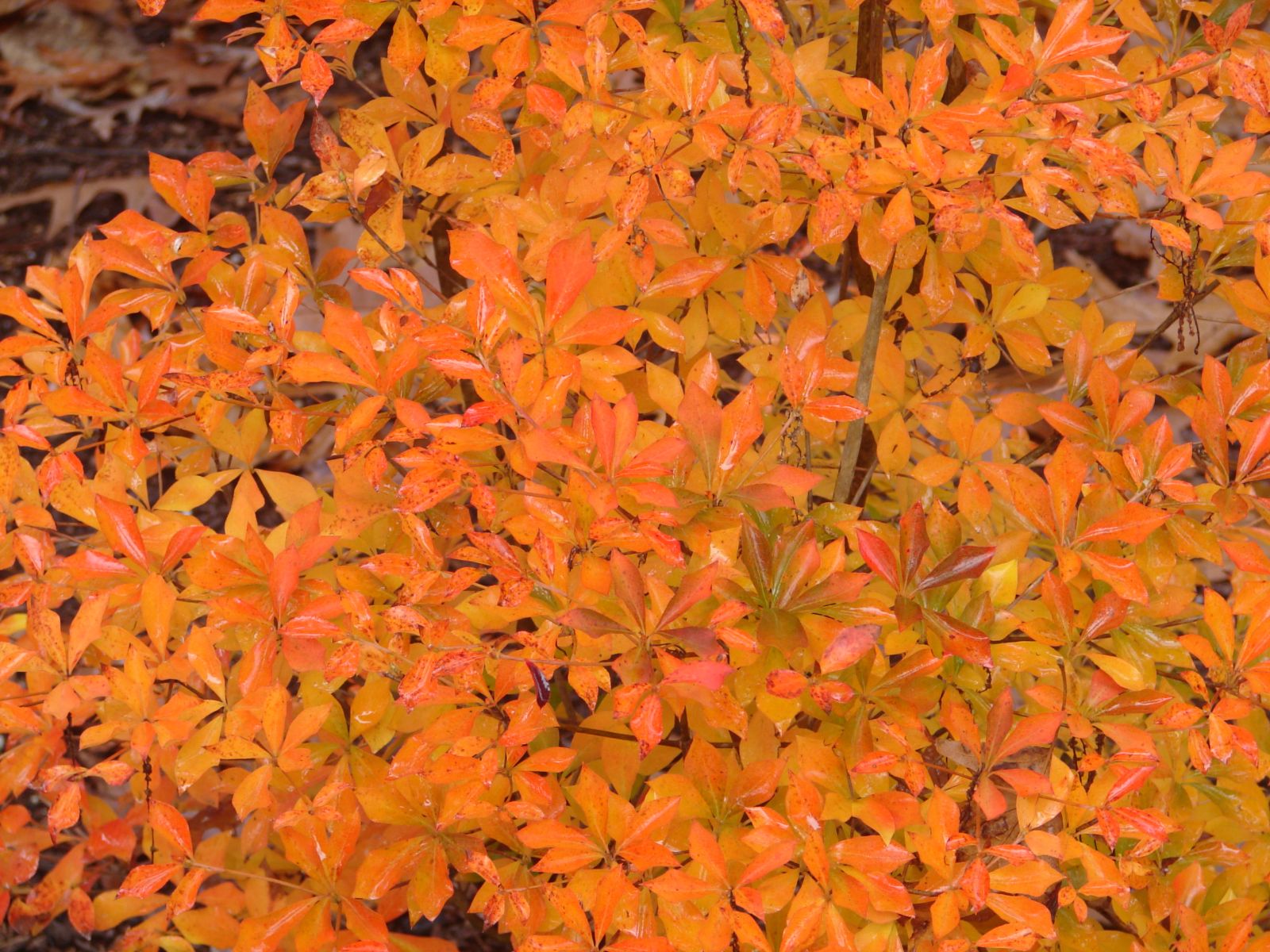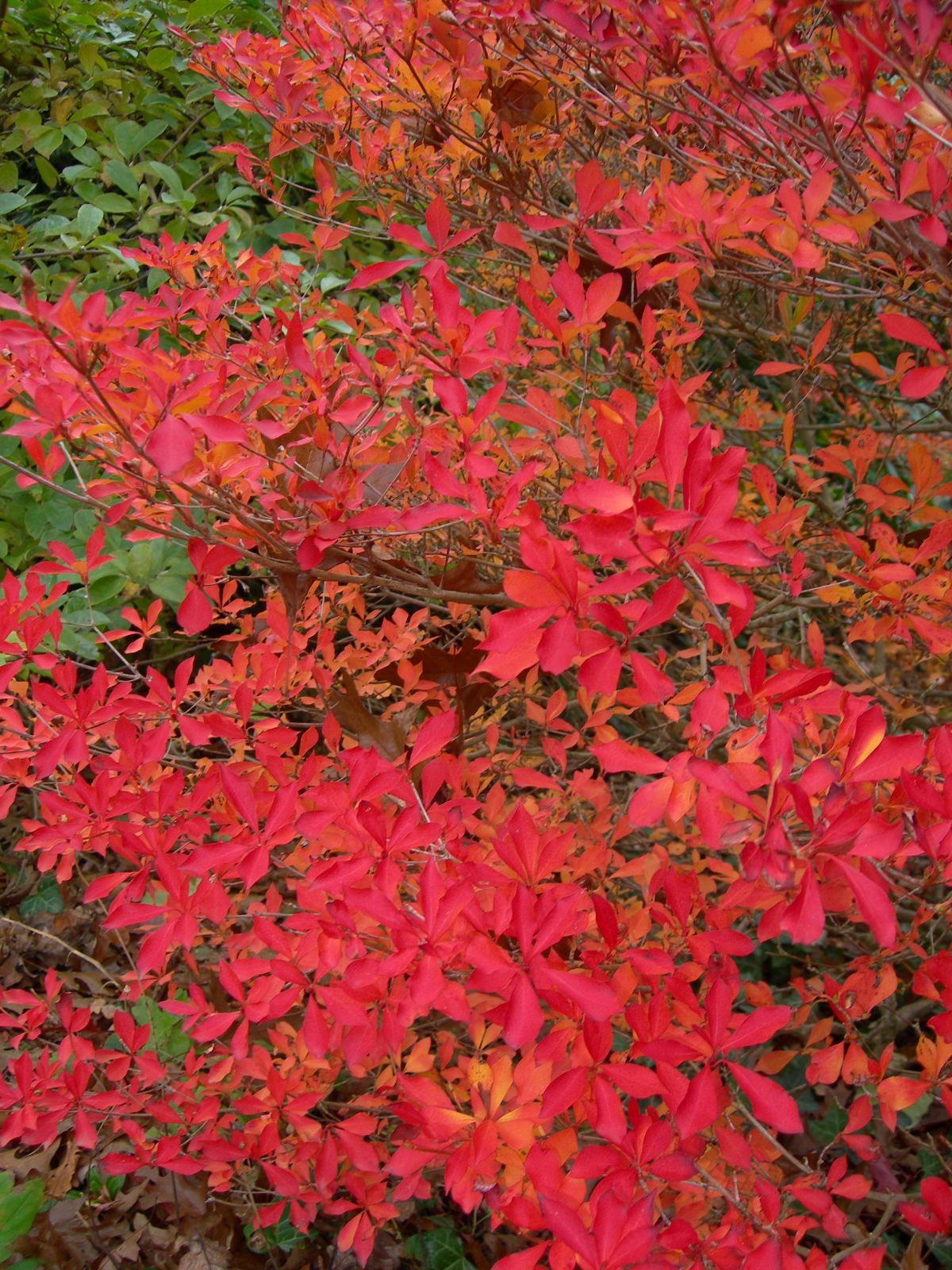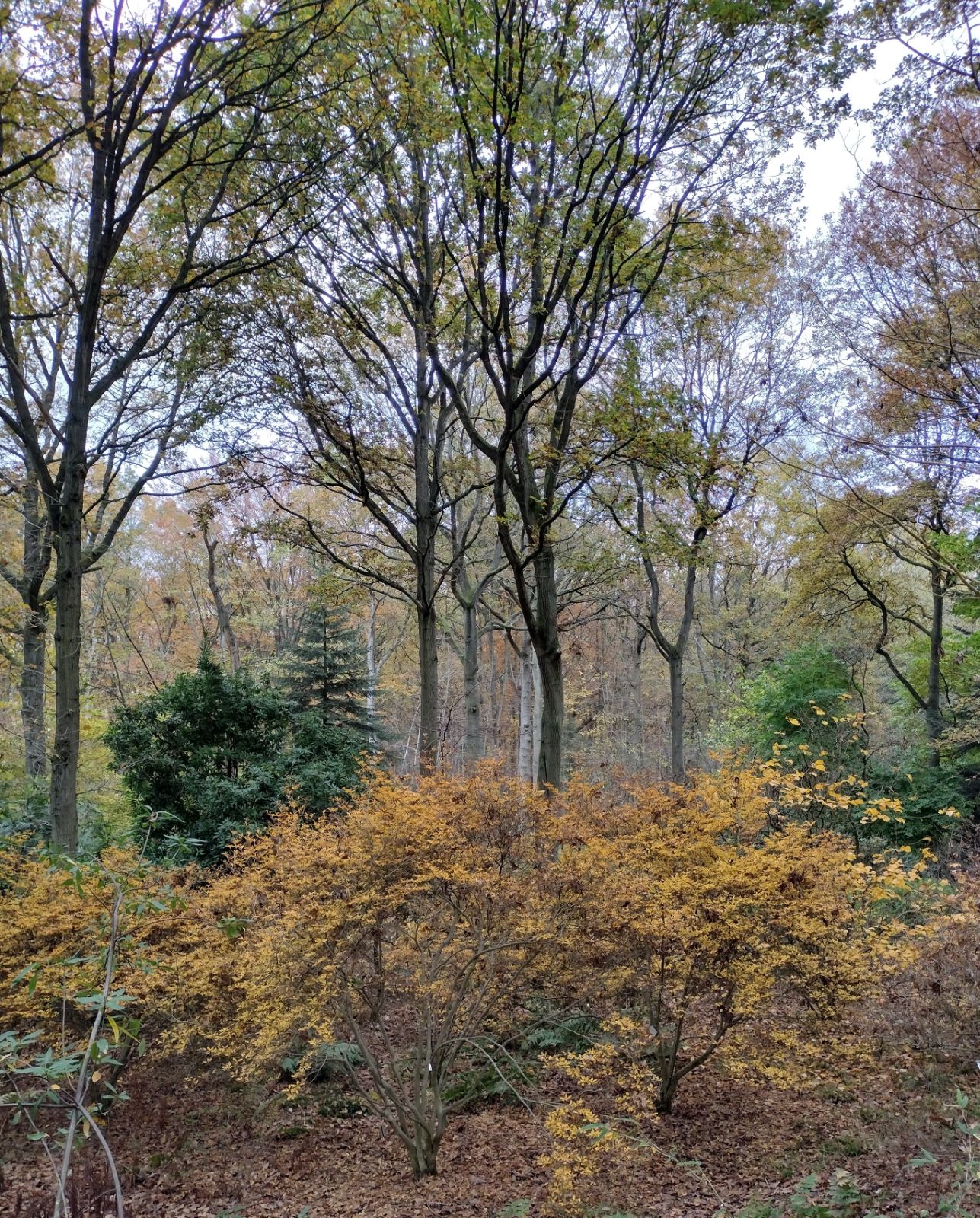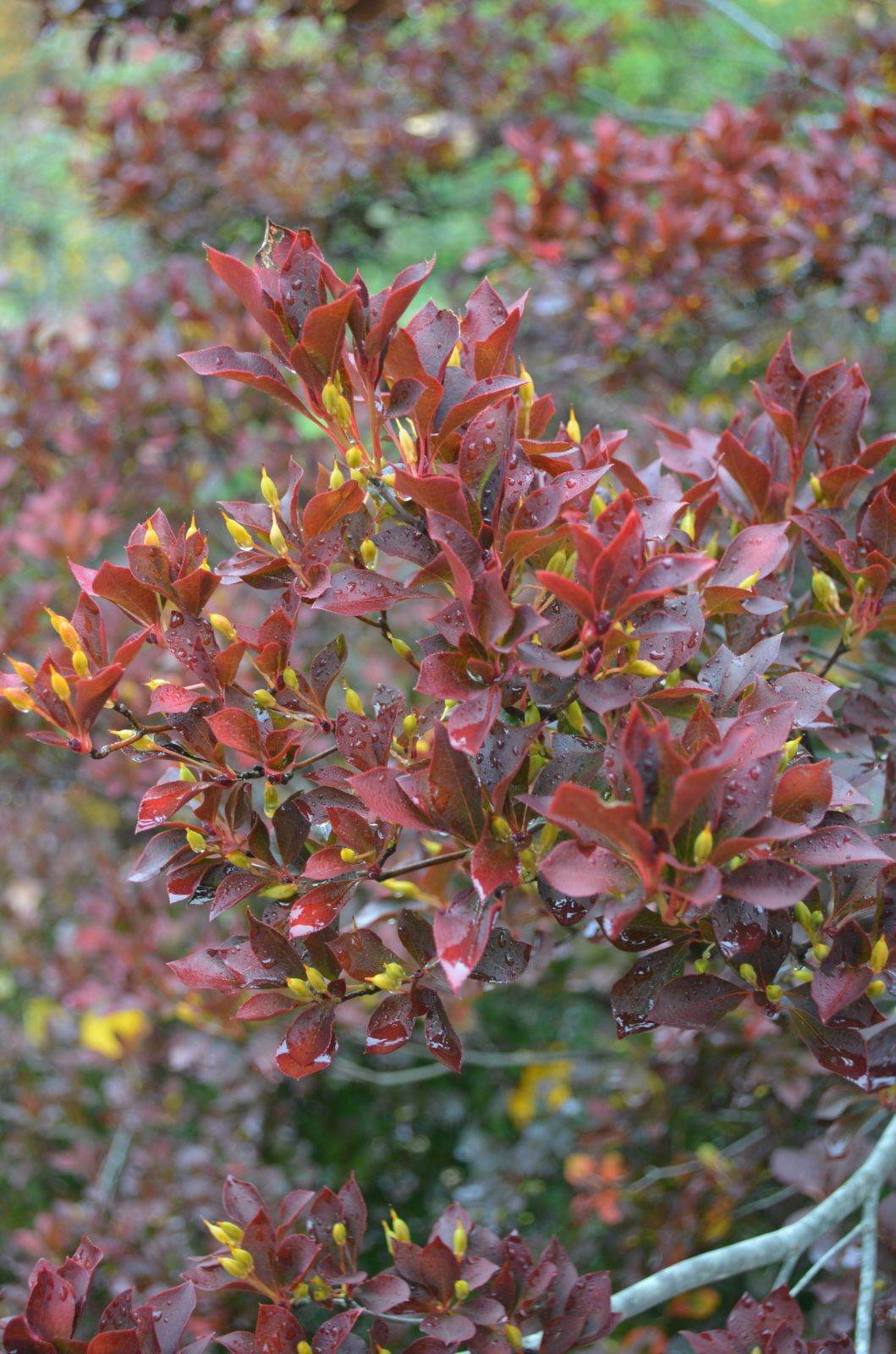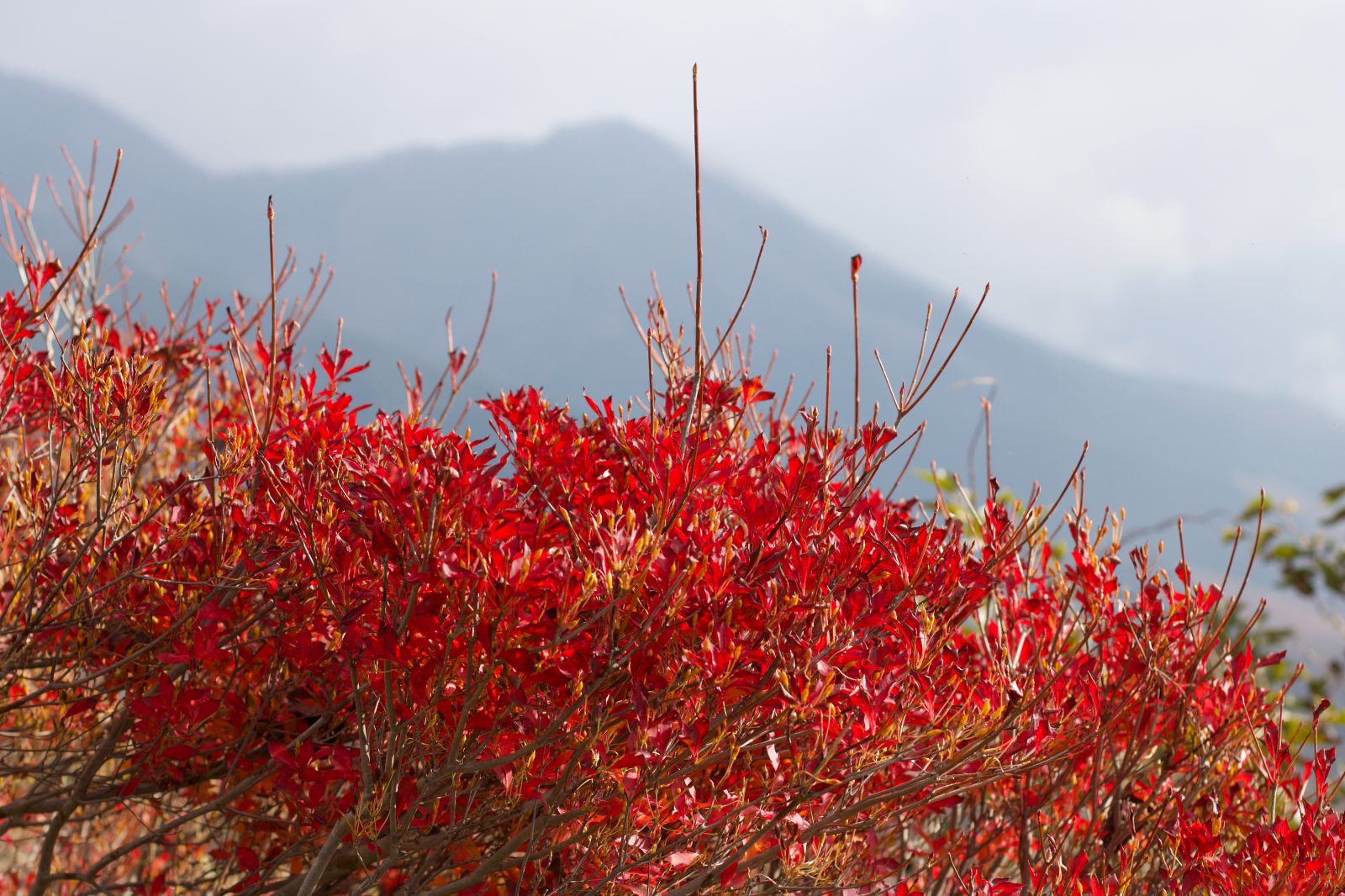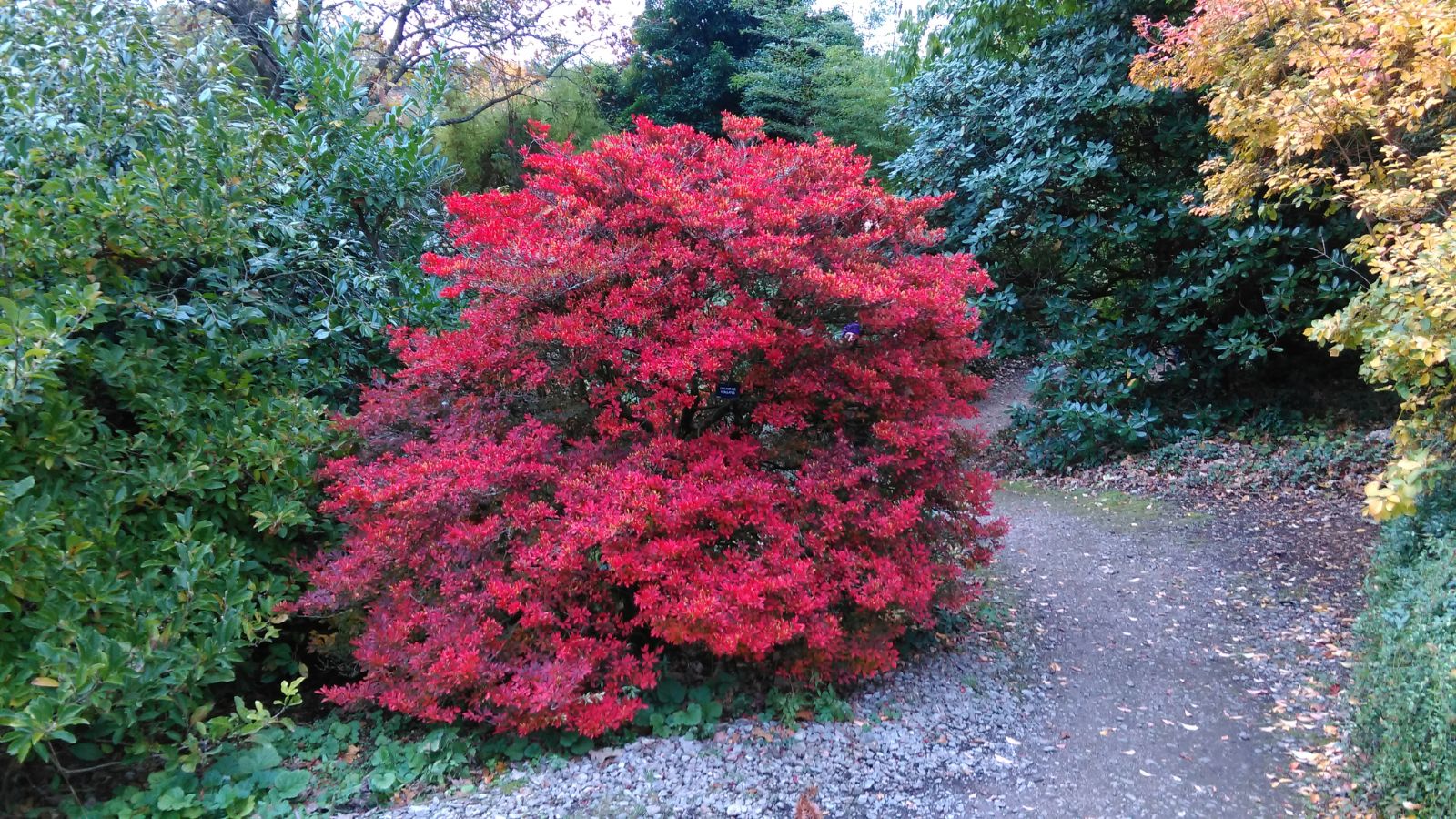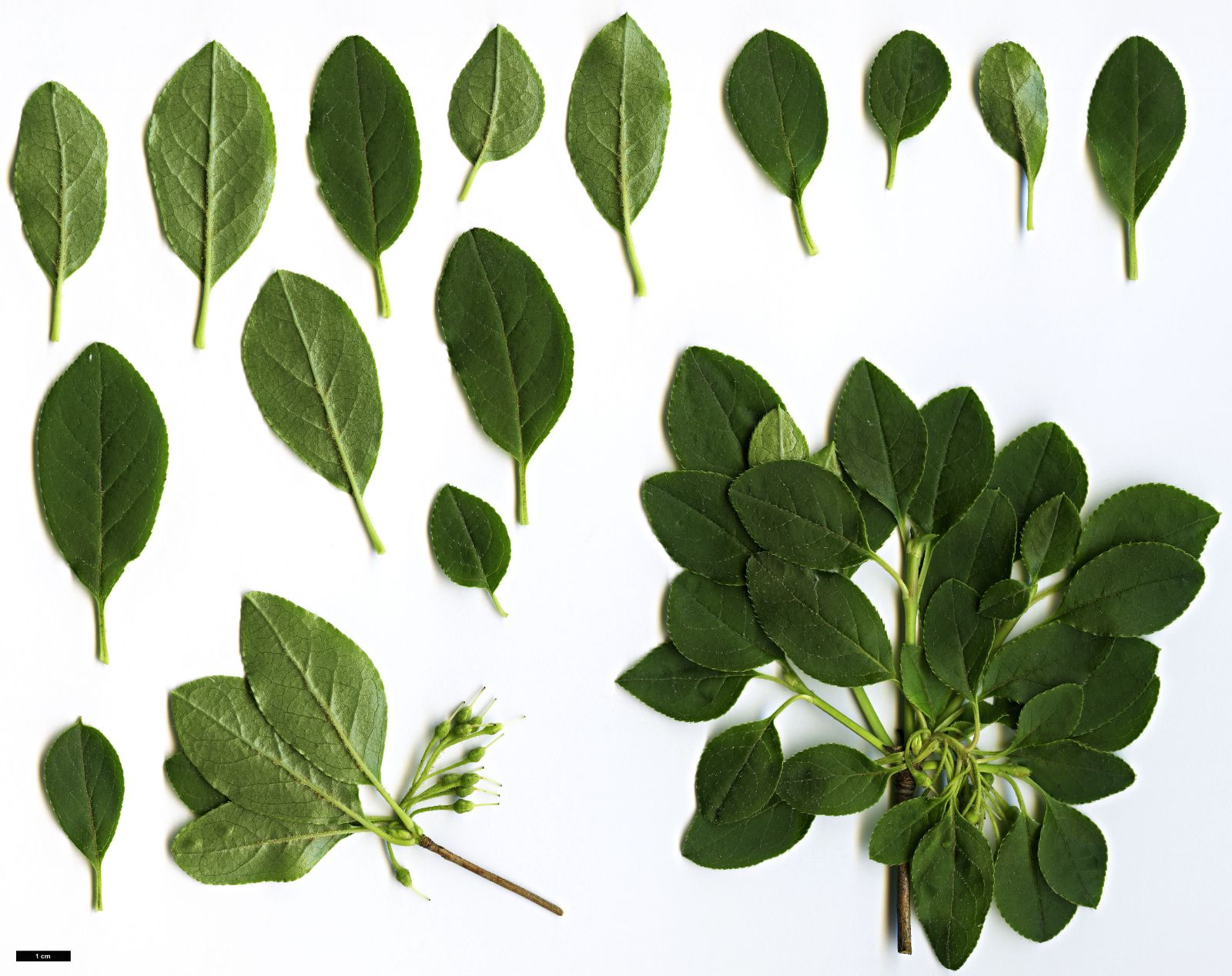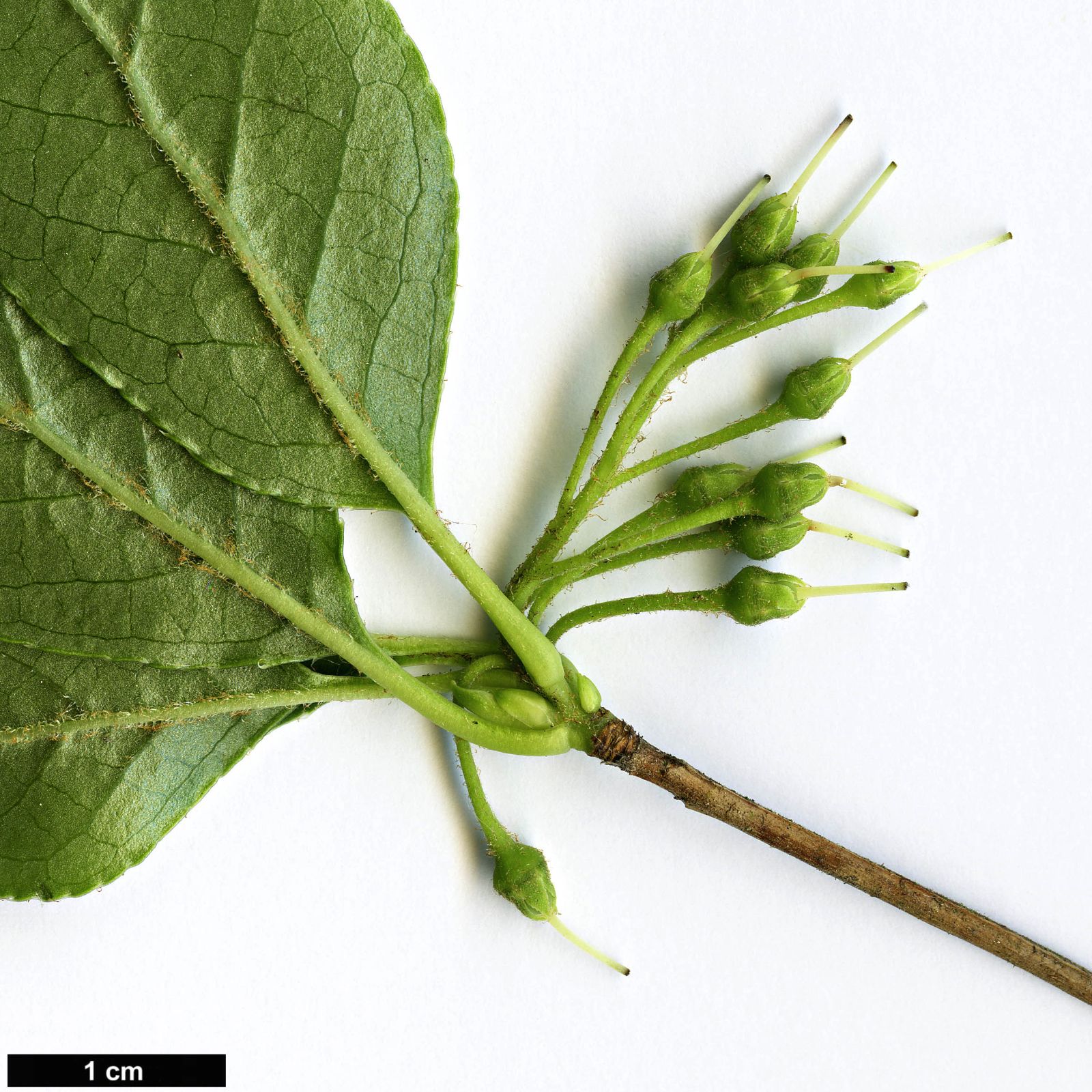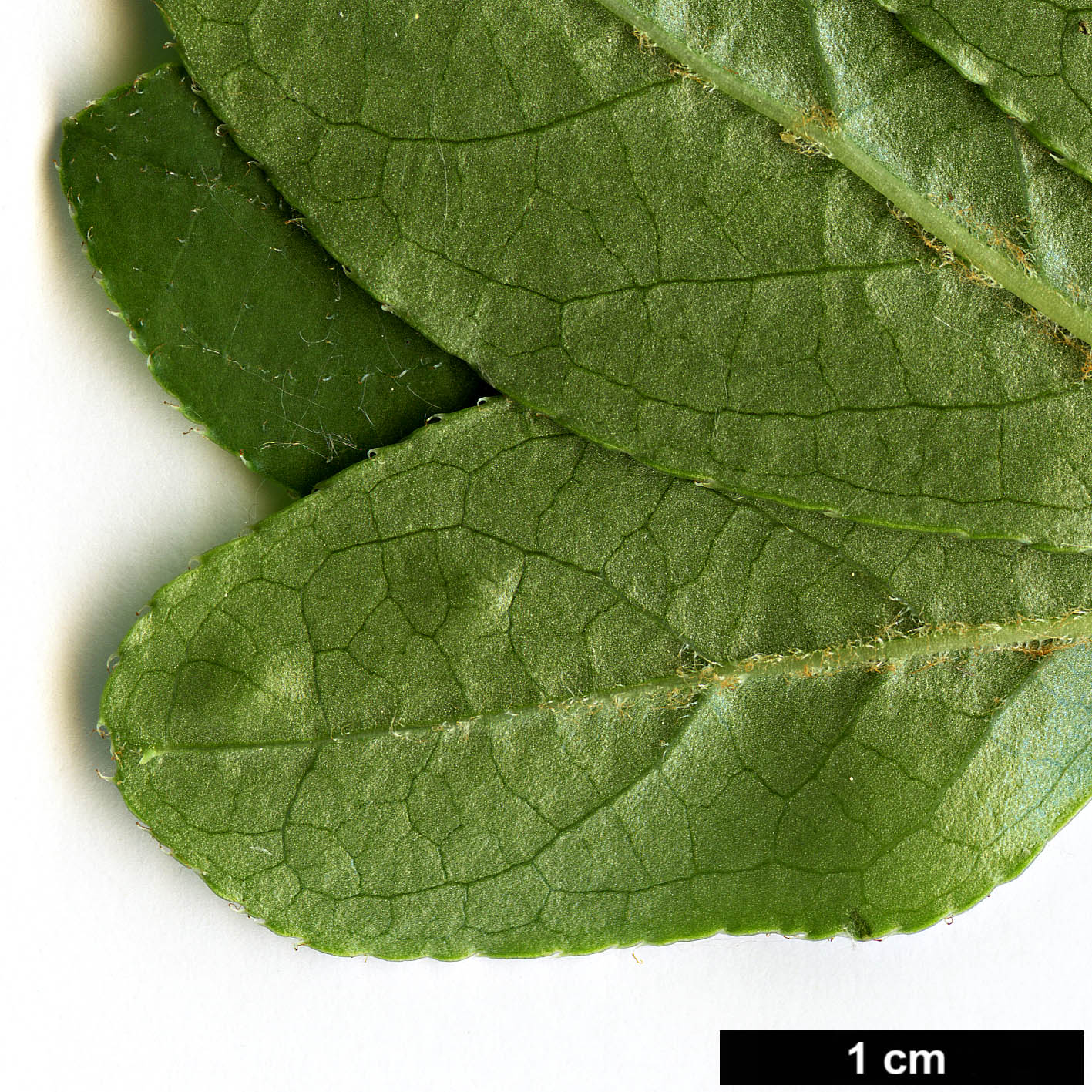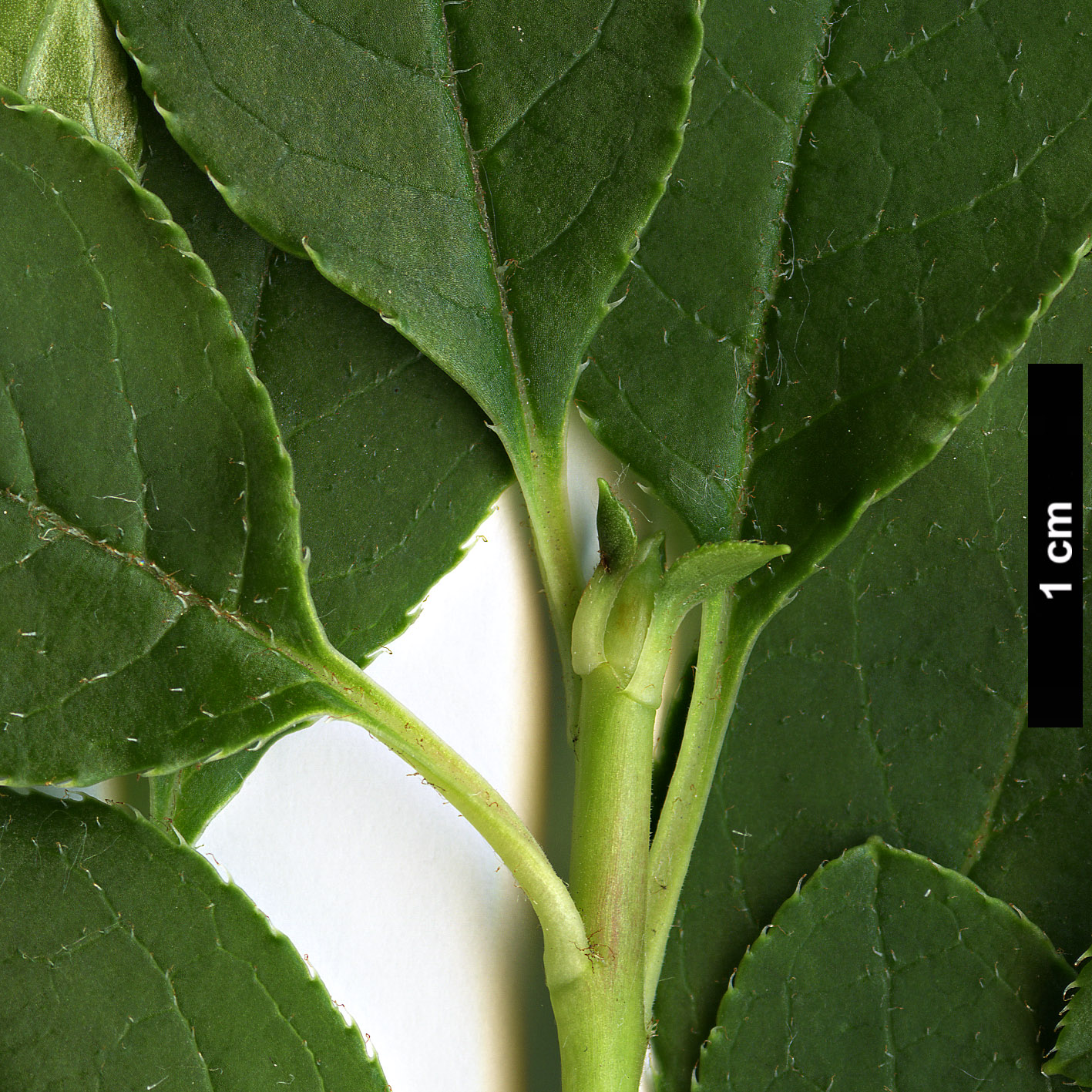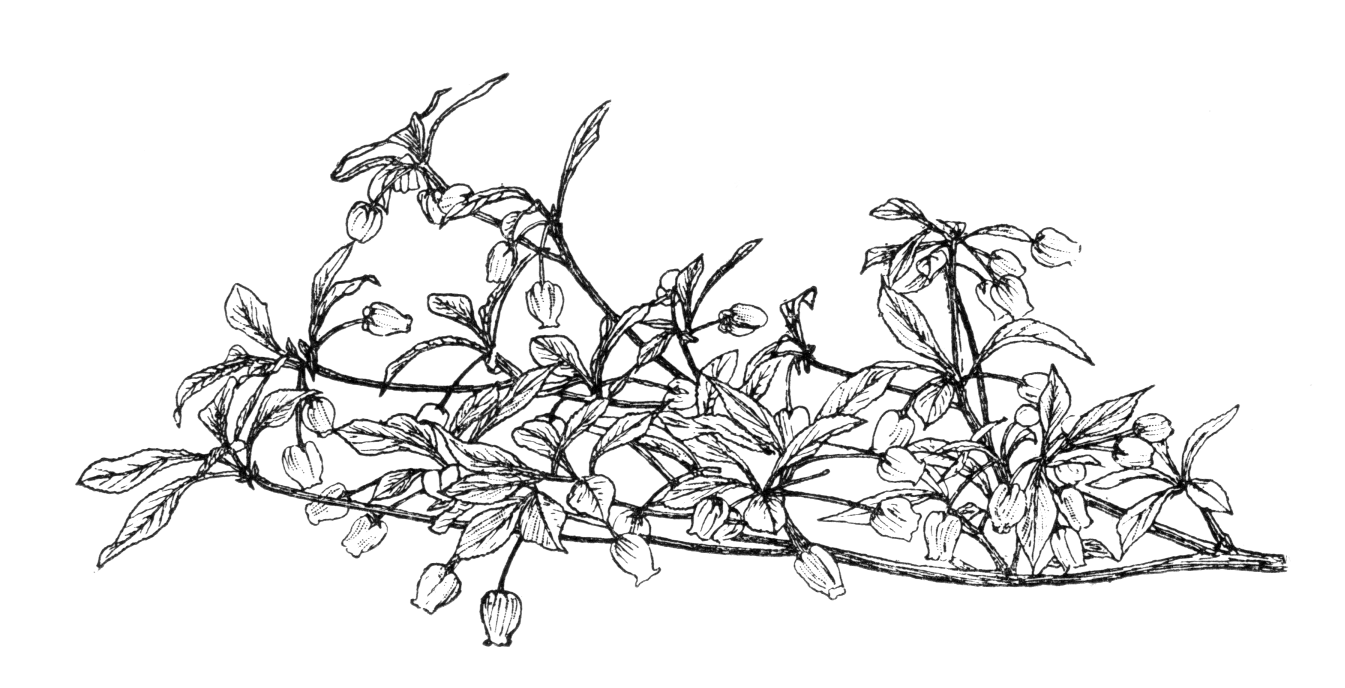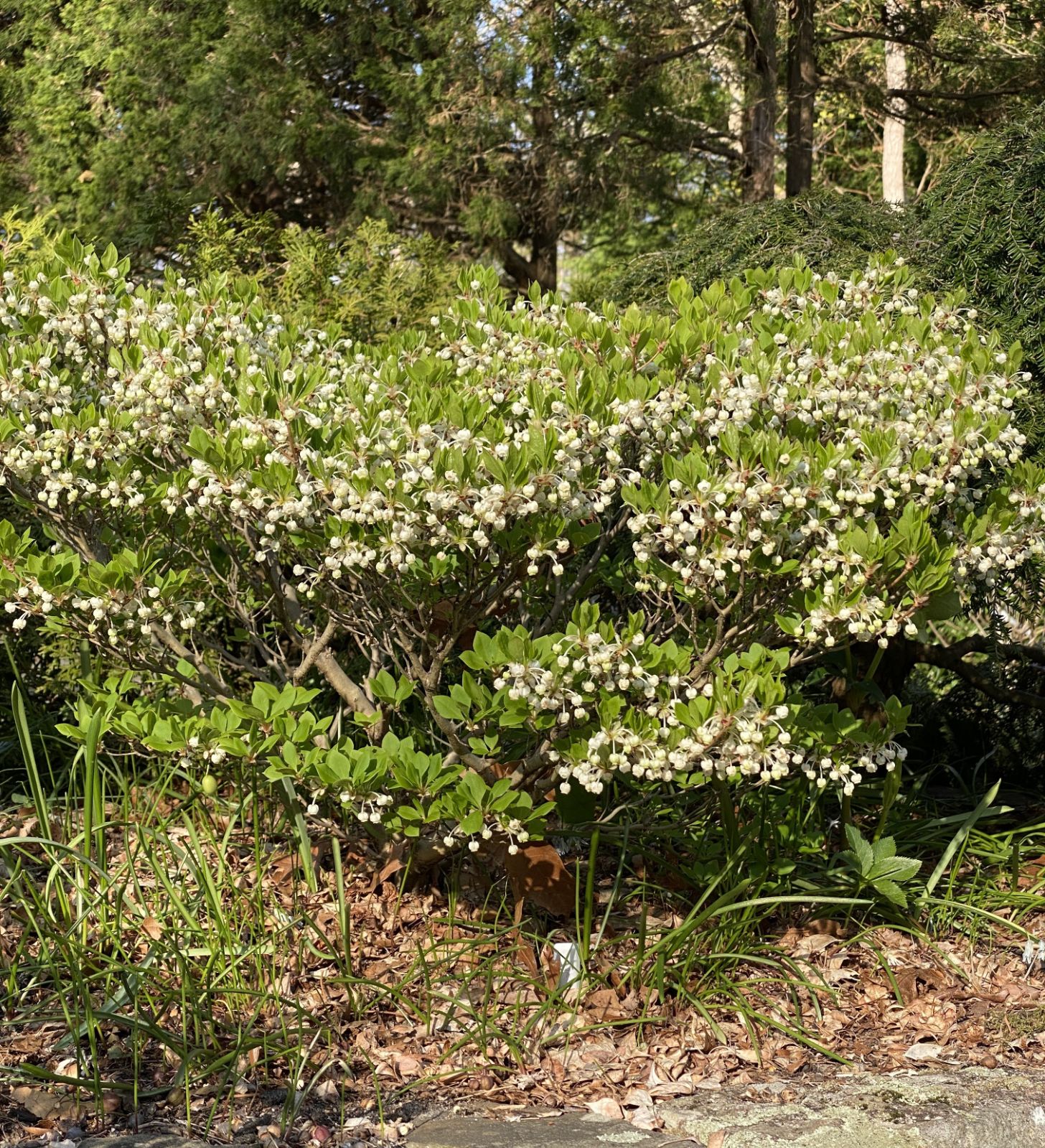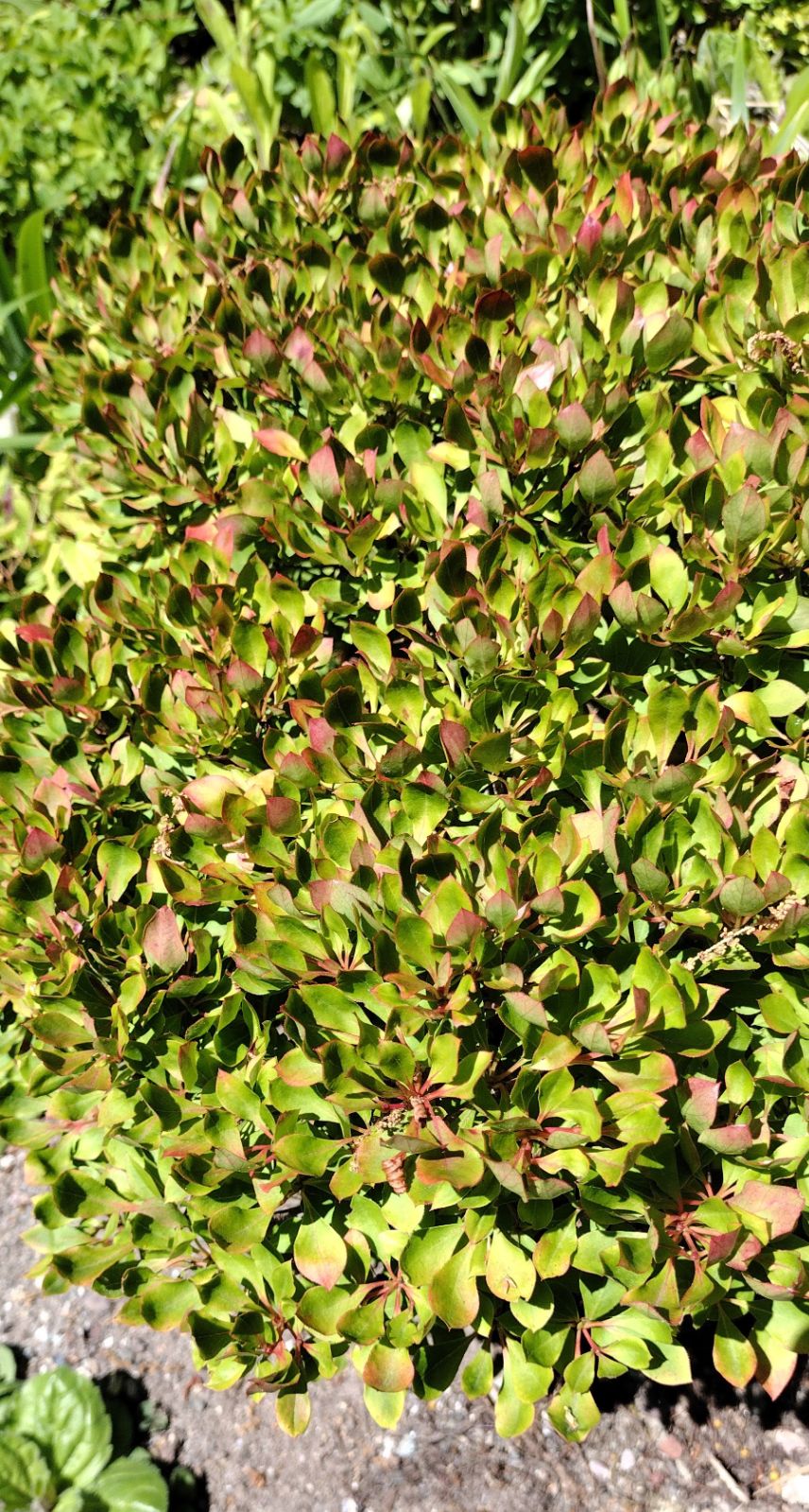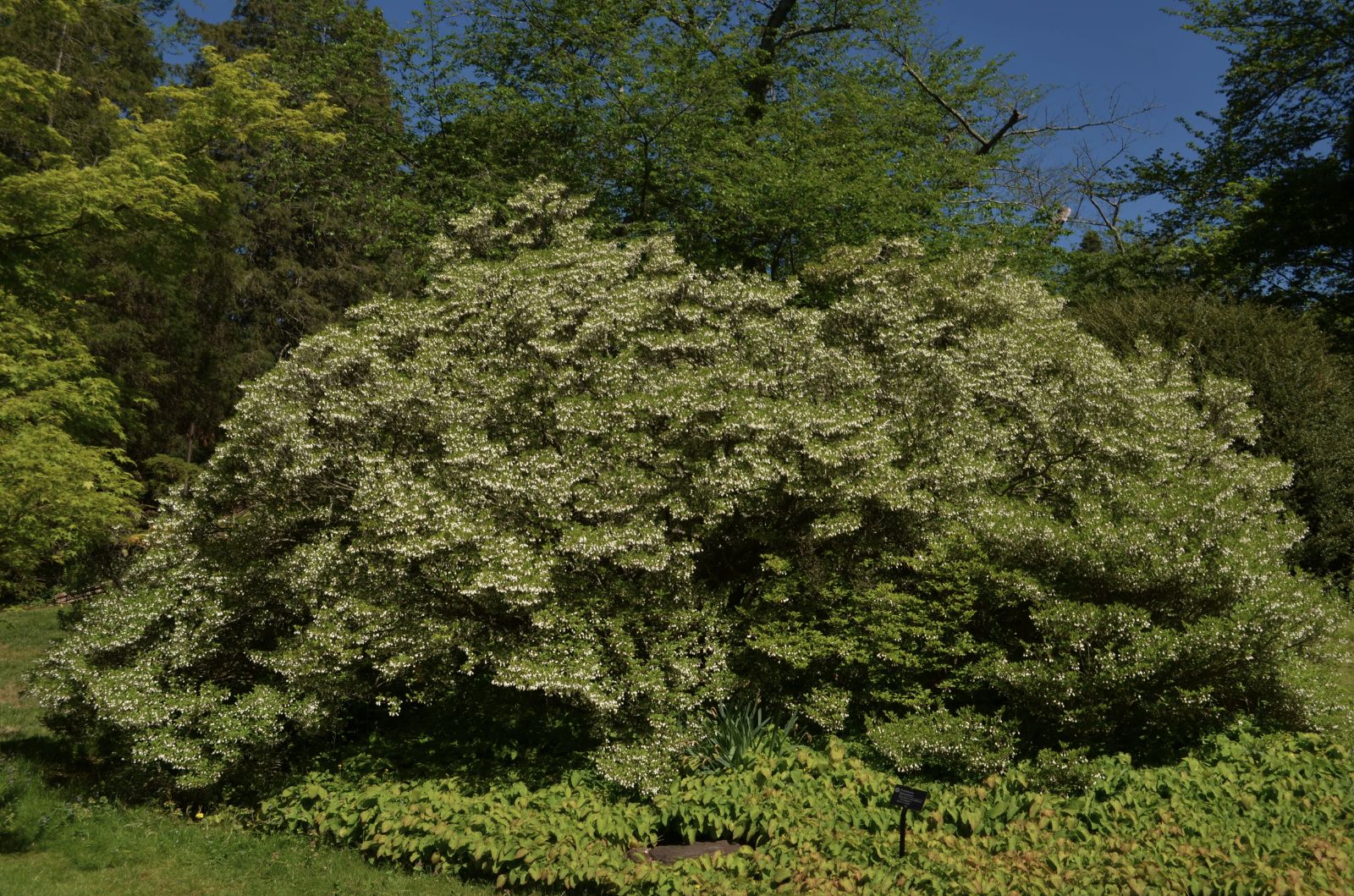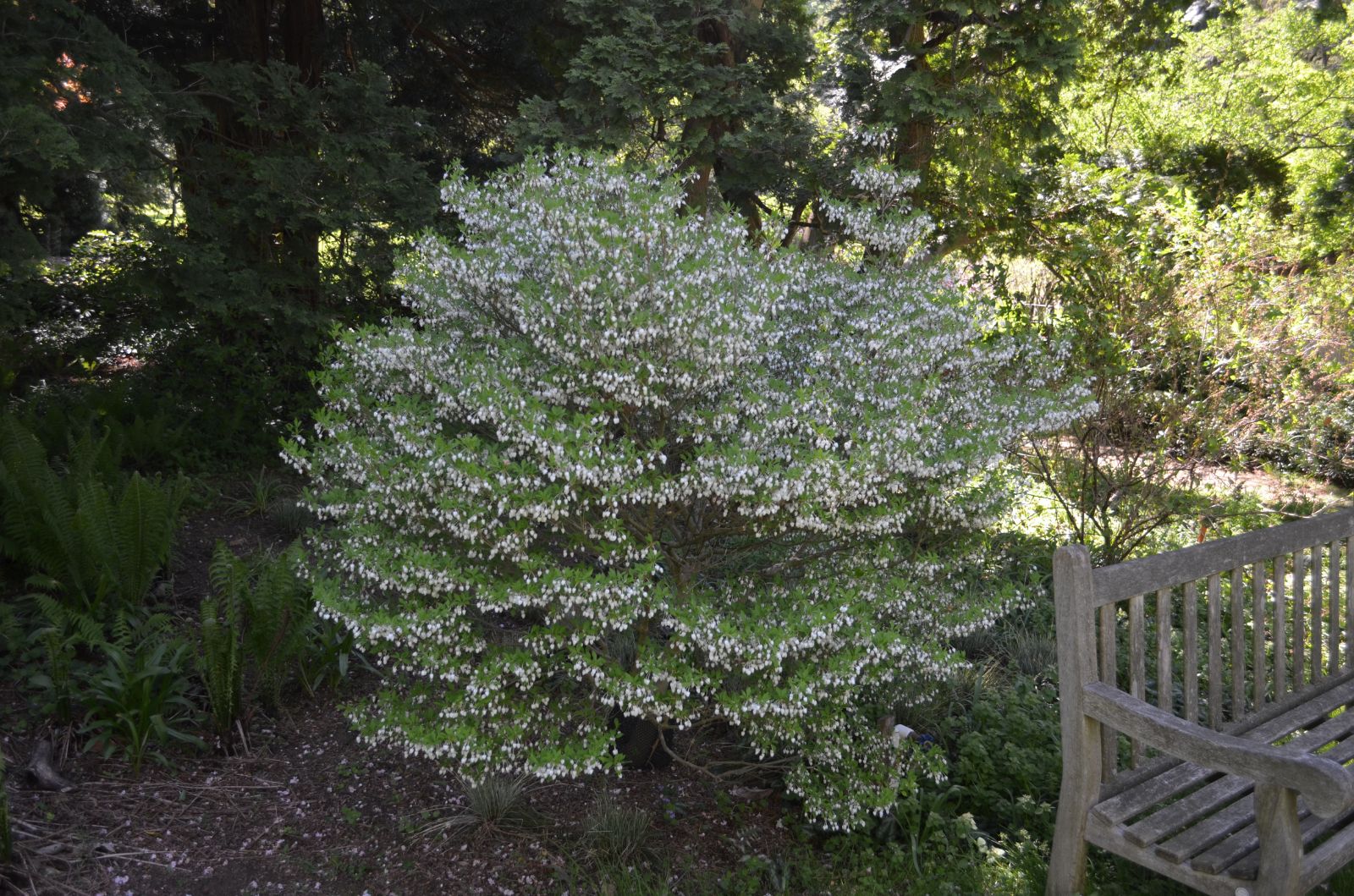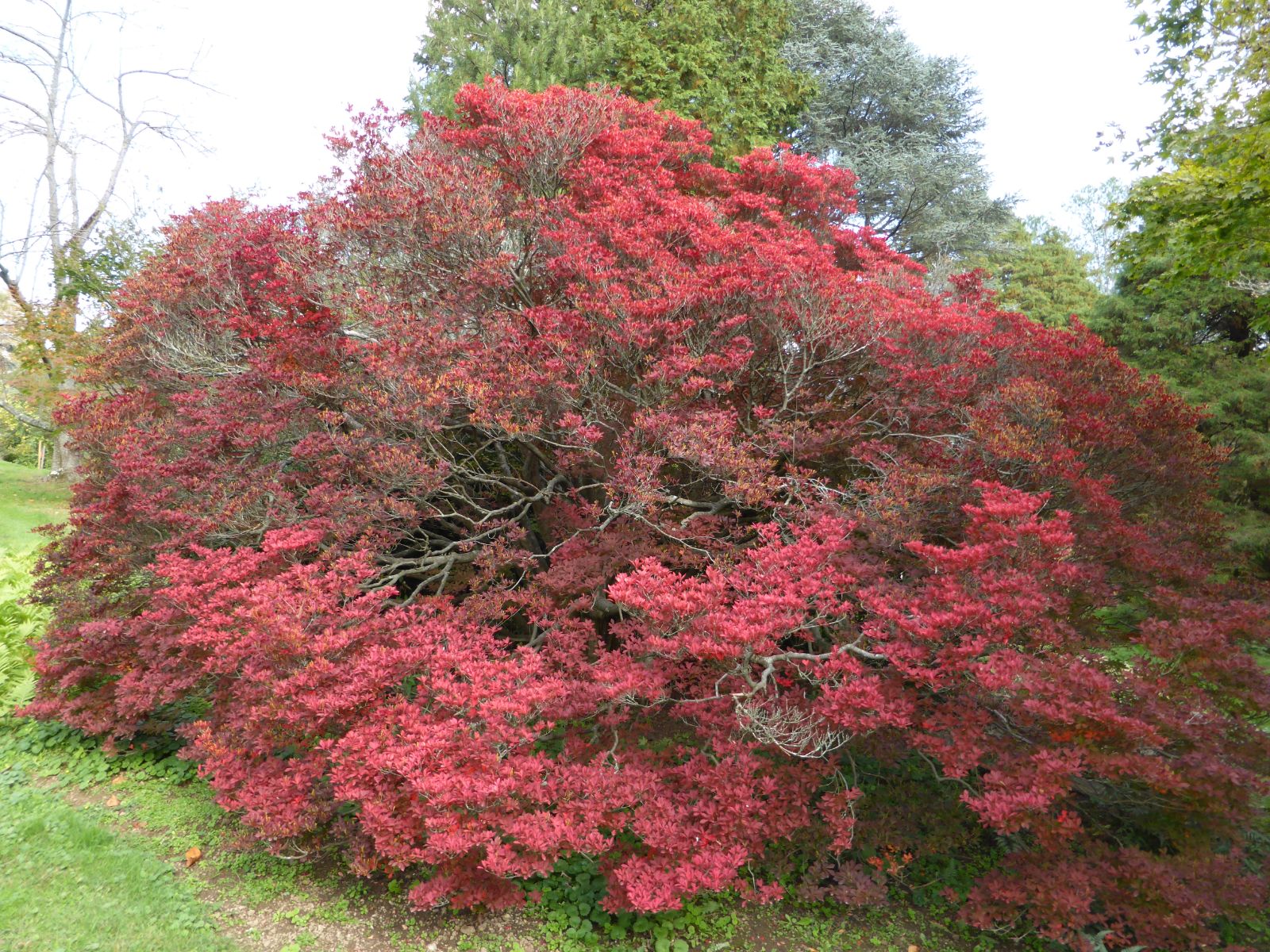Enkianthus perulatus
Sponsor
Kindly sponsored by
Alasdair and Panny Laing
Credits
Tom Clark (2023)
Recommended citation
Clark, T. (2023), 'Enkianthus perulatus' from the website Trees and Shrubs Online (treesandshrubsonline.
Genus
- Enkianthus
- Section Enkianthus
Common Names
- White Enkianthus
- Dōdan-tsutsuji
Synonyms
- Andromeda perulata Miq.
- Enkianthus japonicus Hook.f.
- Enkianthus perulatus f. japonicus (Hook.f.) Kitam.
- Enkianthus taiwanianus S.S.Ying
Infraspecifics
Deciduous much branched shrub, 1–2 m tall. Branchlets terete, glabrous. Leaves alternate on young shoots, generally 4–6 crowded at apex of branchlets, membranaceous; petiole 2–7 mm long, pubescent on upper surface; blade oblong-obovate to obovate, 2–3 × 0.8–1.5 cm, apex acute and terminated into a gland, base acutely narrowed, attenuate into petiole, with many minute acute and hookedly aristate teeth, upper surface glabrous, except sparsely pubescent on midrib, lower surface villous along lower part of midrib. Inflorescences terminal, umbellate, 1–5-flowered, pendulous. Pedicel 1–2 cm long, glabrous, reflexed at flowering, straight at fruiting. Bracts lanceolate, acute, membranaceous, 8–10 mm long, caducous. Calyx broadly campanulate, c. 4 mm long, glabrous, deeply 5-lobed; lobes linear-lanceolate, acuminate. Corolla urceolate, with 5 gibbous swellings at base, white, 7–8 mm long, shallowly 5-lobed; lobes widely ovate, obtuse, much reflexed. Stamens 10, included; filaments pilose; anthers with 2 awns on upper dorsal side. Capsule erect, oblong, 5-ridged, 6–7 × 4 mm. Seeds compressed, narrowly oblong, c. 4 × 1 mm wide, with marginal-like ridges. Flowering mid April to early May. (Iwatsuki 1993).
Distribution Japan southern Honshu (Chiba Prefecture, Tokai & Kii regions), Shikoku, Kyushu Taiwan
Habitat Open, rocky slopes, 200–300 m asl.
USDA Hardiness Zone 5-7
RHS Hardiness Rating H5
Awards AGM
Conservation status Not evaluated (NE)
Certainly one of the gems of the genus, White Enkianthus is a widely grown dainty and decorative shrub; a well-grown, mature specimen is a picture of refinement. Discovered in 1859 in the neighbourhood of Nagasaki, Japan by Sir Rutherford Alcock, it was introduced to western cultivation some ten years later by Messrs. Standish (Bean 1981). Its compact form, habit of blooming prolifically before or just as the leaves emerge, adaptability to cultivation, and its consistently splendid autumn colour conspire to warrant all the accolades it has received.
Although small, the pure white, daintily nodding flowers occur in profusion and are all the more effective as they largely appear on bare stems. The terminal inflorescences are umbellate, helping to distinguish this species from E. subsessilis and E. nudipes in which the inflorescences are racemose (R. White pers. comm. 2023); upon close inspection, the flowers are urn-shaped, the corolla mouth formed by a constriction below the short, reflexed lobes. Plants are relatively slow growing to perhaps 2 m tall and, in time, twice that in width. Like most Enkianthus they tend to be decidedly upright in youth, but will gracefully broaden into a dense, mounding shrub that, in form, is not unlike a low, spreading dissected leaf form of Acer palmatum. Turning shades of brilliant yellow, orange and various shades of red including a vibrant vermilion, the autumn foliage of White Enkianthus easily rivals that of the most intensely colored maple. In shade its colour is much less intense. For garden use in Japan, observed Ernest Henry Wilson (Wilson 1927): “the low, round-topped E. perulatus” is favoured and is “planted in almost every garden in Japan.” It remains a staple in Japanese gardens and responds very well to regular pruning as evidenced by ancient specimens maintained in tightly sculpted forms; not surprisingly, this species is also widely used as a subject for bonsai.
Along with two other Japanese compatriots (E. campanulatus and E. cernuus f. rubens), White Enkianthus is quite common in cultivation in botanic gardens and arboreta throughout Europe and North America, at least where conditions are amenable to their growth. Even though it is clearly a very desirable plant with a long history of cultivation, the vast majority of plants in botanic gardens are of cultivated origin. Wild-source material is currently to be found at the Sonoma Botanical Garden near San Francisco, the Rhododendron Species Botanical Garden near Seattle, and the Arnold Arboretum near Boston, Massachusetts. Perhaps because of their slower growth rate, plants are not widely available from commercial sources; only five sources are listed in the RHS Plant Finder (RHS 2022) and in North America, to actually secure a plant, one has to be quite dedicated to the task of locating a commercial source. The often low branching makes propagating this species by layering an attractive option where only one or two plants are desired.
In 1976, E. taiwanianus was described as a new species from Taiwan. Fewer than 20 years later Mark Flanagan and Tony Kirkham encountered this species during their explorations in 1992. They write, “We are delighted to find the recently named E. taiwanianus, here forming a tall, narrow, flat-topped shrub…its leaves turning a beautful orange-red colour” (Flanagan & Kirkham 2005). Their seed collections might have represented the first introduction of this taxon to western cultivation, however, most accounts of the genus consider this to be conspecific with E. perulatus, including Plants of the World Online, whose treatment is followed here (Plants of the World Online 2022). Nevertheless the Taiwanese populations are interesting, and of conservation concern as E. taiwanianus was listed as rare in the 1997 IUCN Red List (Walter & Gillett 1998).
'Compactus'
USDA Hardiness Zone: 5-7
A collector’s plant if ever there was one! Challenging the conception of what “slow growing” means, this singularly unique clone barely puts on 2.5 cm of growth per year. This rate of growth makes acquiring cuttings for propagation purposes a difficult proposition. Where exactly this exceptionally compact, slow growing, dwarf form originated is unknown but it is known that the oldest and largest specimen in North America was grown for many years by Mr. Harold Epstein in his marvellous garden in Larchmont, New York. In his 2009 manual, Michael Dirr notes that this plant is only 18 inches (46 cm) tall and 30 inches (76 cm) wide after 30 years (Dirr 2009). Upon Mr. Epstein’s death, the plant was auctioned off for a princely sum and transplanted to a private Connecticut garden. That same specimen changed hands again and is now successfully established at Wave Hill, a public garden in the Bronx, New York City. A specimen only slightly less spectacular grew in the delightful Branford, Connecticut garden of esteemed plantsman Dr. Nick Nickou. Upon his passing, Dr. Nickou’s specimen was transplanted to the nearby Broken Arrow Nursery in Hamden where it continues to thrive and serves as a stock plant ensuring that this very special form remains in cultivation.
- Dwarf Form This is grown in the UK and has shown up with some regularity on the show benches of the Alpine Garden Society; the descriptions in the Quarterly Bulletin of that group suggest that this form is synonymous with ‘Compactus’.
- ‘Tsukumo’ Another dwarf form, rarely encountered.
'J.L. Pennock'
Other than various clones of E. campanulatus this clone is likely the most widely cultivated cultivar of any enkianthus, at least in North America. It was established in 1994 under US Plant Patent number 08901 by Rick J. Lewandowski, Paul W. Meyer, and Rochelle J. Dillard, all staff at the time at the University of Pennsylvania’s Morris Arboretum in Philadelphia. The original plant was selected by Lewandowski and Meyer from among several seedlings growing in a cultivated research collection of E. perulatus at the Morris Arboretum. It differs from other more typical forms by beginning to develop its distinctive, bright red fall coloration approximately two weeks before other such plants, and retaining its fall color to the end of the duration of the fall season. It can be asexually propagated by softwood cuttings (US Patent and Trade Office 1994).
This clone has been propagated and distributed by the Morris Arboretum and now exists in several northeastern U.S. botanic gardens and arboreta. It is also established at Arboretum Wespelaar in Belgium.

